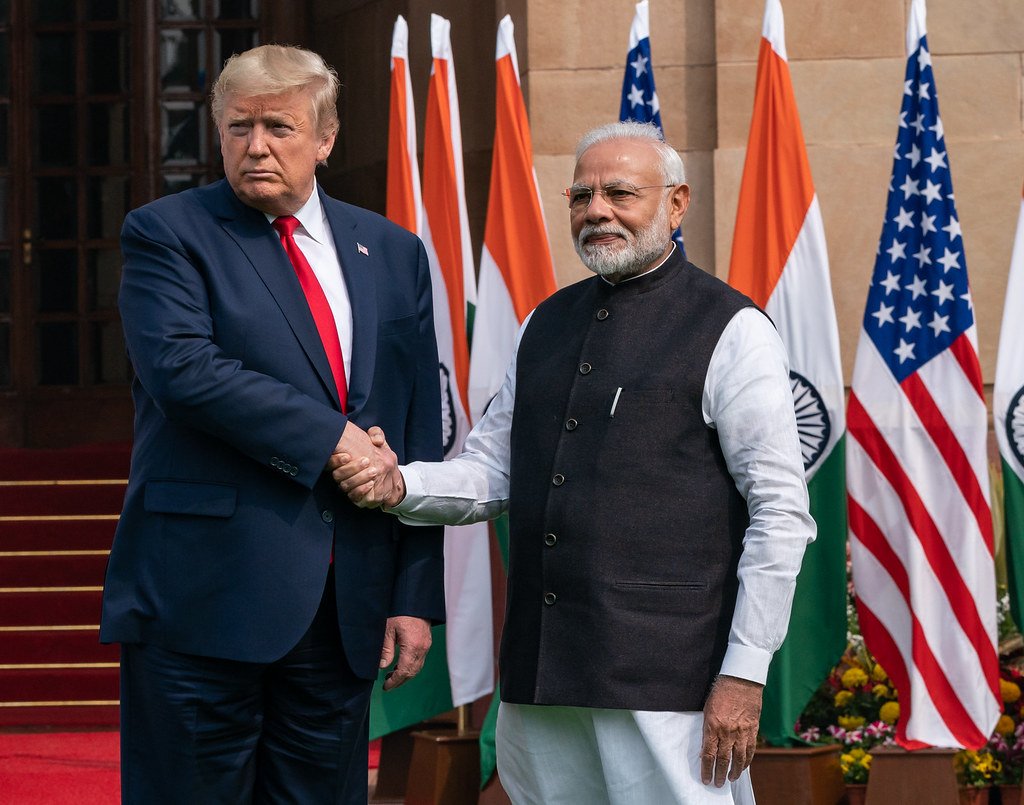
Modi’s Foreign Policy Under Fire Amid U.S. Tariff Shock
By Mohammed Ahsan
Prime Minister Narendra Modi’s ambitious vision of turning India into a “Vishwaguru” — a global leader — is facing a harsh diplomatic reality. The recent imposition of a 25% tariff by the United States on Indian exports has exposed the cracks in India’s foreign policy, which critics argue has relied more on personal optics and populist rhetoric than long-term strategy.
Modi’s approach, often dubbed “hugplomacy”, prioritized personal rapport and photo-ops with global leaders over deep diplomatic engagement. While this gained short-term visibility, it failed to protect India’s strategic and economic interests in the long run. Relations with the U.S. under the Trump administration began to sour after India insisted on maintaining its defense and oil partnerships with Russia — moves Washington saw as acts of soft defiance. The result: punitive tariffs targeting key Indian export sectors.
At the same time, Modi’s government showed little seriousness in improving relations with regional adversaries. Tensions with Pakistan and a deteriorating border situation with China have left India diplomatically isolated. With strained U.S. ties, growing conflict with neighboring countries, and continued dependence on Russia, India’s foreign policy appears disjointed and inconsistent.
Adding fuel to the fire, former U.S. President Donald Trump claimed over 30 times that India’s ceasefires with Pakistan were influenced by his mediation — assertions that went largely unchallenged by the Indian government, sending confusing signals to the international community.
In Parliament, Prime Minister Modi had a chance to address these concerns seriously, but instead fell back on slogans and spectacle. Domestically, the government’s hardline policies, rising majoritarian nationalism, and weakening of democratic institutions have further eroded India’s global image. Human rights concerns and criticism from Western think tanks have tarnished India’s standing in the world.
Meanwhile, India’s main opposition, the Congress Party, under Rahul Gandhi, is in disarray, leaving Modi’s government unchecked. The lack of a strong opposition has allowed policy failures to go unchallenged, leading to a perfect storm of economic, diplomatic, and political crises.
Economic Fallout: Millions at Risk
The 25% U.S. tariff is not just a political slap but a direct economic blow. Major export sectors such as jewelry, textiles, auto parts, and electronics are reeling. The diamond industry in Surat, once a global hub, is in crisis. Export giants like Welspun, Trident, and Sokal Dyes have halted expansion plans. GDP could take a 0.3% hit, while over $131 billion in bilateral trade faces turbulence.
Even Moody’s and Goldman Sachs have raised red flags over India’s economic trajectory.
The agriculture sector isn’t immune either. While basmati rice exporters remain optimistic due to stronger ties with the Middle East, growers of wheat, pulses, and other crops face a bleaker outlook. Many small and medium farmers lack the resources to pivot to alternative markets. Exporters of Indian fruits are also likely to feel the pinch.
What India Must Do Now
India urgently needs a strategic reset:
Re-engage diplomatically with the U.S., using WTO mechanisms to seek revision of the tariff decision.
Explore new trade avenues in Europe, Africa, Latin America, and East Asia to reduce dependence on American markets.
Focus on transparent diplomacy, economic reforms, and internal unity instead of grandstanding.
If the Modi government truly envisions India as a global leader, it must shift from rhetoric to realism. India’s strength lies not in political slogans or image-building, but in its people, economy, democratic values, and mature diplomacy.
Otherwise, as critics warn, the dream of “Vishwaguru” may become a nightmare, with India slipping into deeper economic decline, diplomatic isolation, and political instability.
